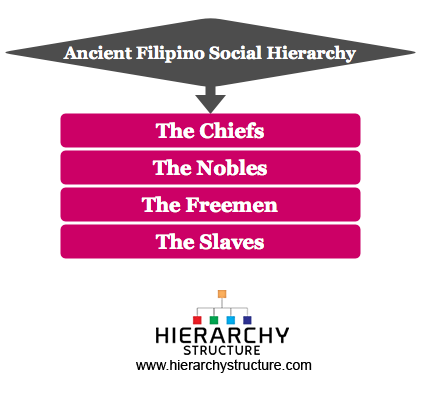In the days of ancient Filipinos, people were mostly engaged in activities like fishing, farming, swine raising, poultry, gold mining and trade etc. Most people were engaged in agricultural or other similar activities and also worked on the coastal areas.
Based on what they did and which family they were born into, there was a social hierarchy structure observed and followed among the early Filipinos. According to this structure, people at the top of the pyramid held the maximum status and responsibility and this kept decreasing as the pyramid tapered down. To understand this better, you can go through the following given information.
The Chiefs
The chiefs held the topmost position among the ancient or early Filipinos and enjoyed most social benefits and luxuries. The chiefs were respected, had the maximum wealth and gave instructions for others to follow. They presided over communities which were also known as Barangay. The head of the chiefs was known as the Datu who also headed the Barangay.
The Nobles
The nobles occupied the next highest hierarchy position during the early Filipino days. The nobles were also wealthy, enjoyed a lot of respect and responsibility and were people who were engaged in important social decisions and works. The Filipinos family members and relatives of the chief were counted among the nobles and were directed by the chief to perform many functions for the society. These people together comprised of the maginoo class group of the nobles
The Freemen
The next Filipino social class which was observed in the ancient Filipino days was that of the freemen. This was the middle class of the society and people belonging to this class were said to belong to the timawa or maharlika group. Freemen didn’t enjoy as much benefits and respect in the society and were mainly involved in low paying jobs. They were farmers, fishers etc. who earned their living on a per day basis and wages. They were often hired by the nobles to perform duties.
The Slaves
The lower most class in the ancient Filipinos was that of the slaves. Slavery was a common practice during those days and slaves were those who had no rights, no responsibility and were under the control of their masters who were mostly the nobles. These men weren’t born under any class given above and one was usually named a slave from birth. But sometimes, a person who wasn’t able to pay debts or was punished could also become a slave.

